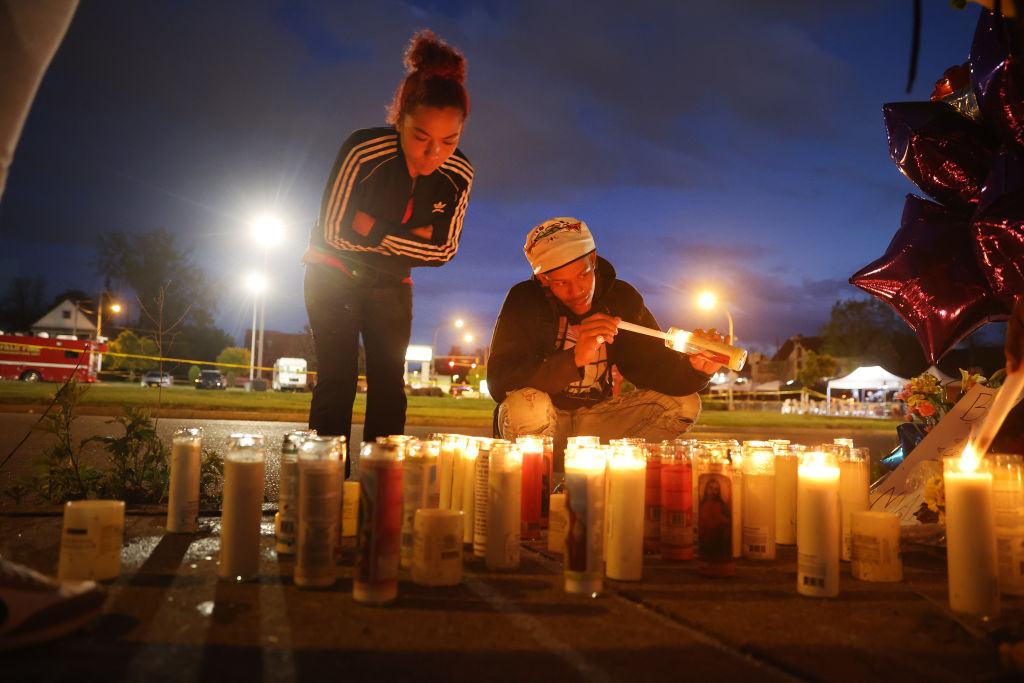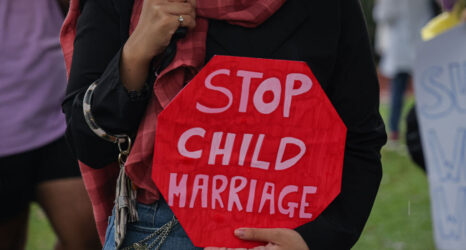Media coverage of the horrific massacre in Buffalo needs to address race and gender.

The dominant media narrative about the horrific massacre in Buffalo describes it as a racist hate crime perpetrated by an 18-year-old who had been radicalized online through exposure to the ‘great replacement‘ theory.
Under this conspiracy theory, which originated in Europe but has become a rallying cry across a wide swath of right-wing America, from neo-Nazis to Fox News, Jews and other shadowy global elites have plotted the demise of white European society through their promotion of multiculturalism and immigration from Global South countries with large non-white populations.
Consumed by racist hatred and possibly suffering from still-unidentified mental health challenges, the shooter drove 200 miles from his small and overwhelmingly white rural community to an urban Buffalo neighborhood that he knew was predominantly African American. Armed with an assault rifle that is notoriously easy to obtain in a country awash in guns, he carried out the latest mass killing in a country already numb to such events, leaving in his wake grieving families and yet another community in mourning.
One twist to this story: Like some other racially motivated mass killings in recent years, the murderer wrote and released a manifesto, in which he detailed both his meticulous plans for the assault and the underlying rationale for carrying it out.
Most mainstream coverage and commentary about this depraved act has focused, quite rightly, on racism. From the inception of this country, communities of color have experienced brutal violence at the hands of whites. This incident adds a new chapter to a long and shameful catalog of racist hate crimes in which African Americans and other people of color have been killed by whites determined to defend and maintain white supremacy, regardless of the cost to innocent individuals just trying to live their lives.
This is all accurate as far as it goes—but there is more to the story. The killer is not just a young white person. He is a young white man. For us to have any hope of preventing future such incidents, and effectively countering the belief systems and social forces that produced him and so many others, we need to understand the complex intersections of race and gender that lie at the heart of these ongoing tragedies.
The alarming increase in right-wing attacks in this country is due to a growing number of aggrieved white men who believe in both the acceptability and necessity of violence to perpetuate white supremacy and protect and defend their (white) people. In his murder manifesto, the Buffalo shooter put it this way: “I carried out the attack,” he wrote, in order to intimidate and physically remove the “replacers,” and to incite violence with the intent of creating an “atmosphere of fear and change” that could “eventually start the war that will save the western world.”
Furthermore, he wrote, “The time for meekness has long since passed,” as has the time for a democratic solution. “Men of the West must be men once more.”
Notably, the Buffalo killer thinks of himself in gendered terms. In words that echo those of Brendan Harrison Tarrant, who murdered 51 Muslim worshipers at two mosques in New Zealand in 2019, as well as the Norwegian mass murderer Anders Behring Breivik, who blamed feminism and soft white men for the increasing Islamization of Europe before slaughtering 77 (mostly white) people in 2011, dozens of them teenagers at a summer camp, he wrote:
“The people who are most to blame [for The Great Replacement] are ourselves, European men. Strong men do not get ethnically replaced, strong men do not allow their country to degrade, strong men do not allow their people to die. Weak men have created this situation and strong men are needed to fix it.”
With this explicitly gendered rhetoric available to review online, it is folly for media commentators and analysts to continue to refer to the alleged perpetrator—in this case and others—with gender-neutral terms such as “shooter,” “individual,” “suspect,” “white supremacist” and “terrorist.”
There is no gender neutrality in the commission of these acts; they are overwhelmingly committed by white men. Journalists, podcasters and writers who talk and write about them need to acknowledge this.
To what end? To understand the ways in which culturally resonant beliefs about “manhood” are implicated in the commission by men of various types of violence—from domestic and sexual violence to school shootings, mass killings, and even incidents of organized political violence such as the January 6 insurrection.
Young white men who join far-right movements feel entitled to a sense of belonging and community, of holding unchallenged moral authority over women and children, and of feeling that they count in the world and that their lives matter.
Michael Kimmel, Healing from Hate: How Young Men Get Into—and Out of—Violent Extremism
Over the past 30 years, an outpouring of research, advocacy and activism has provided a wealth of insight into a multitude of changes in the lives of men across the ethnic and racial spectrum, in response to a variety of macroeconomic, sociocultural and historical processes. These include some of the tensions and crises white men have faced in an increasingly multiracial and multiethnic society, as well as one in which dramatic feminist and LGBTQ advances have unsettled white male centrality.
Not surprisingly, right-wing movements have arisen in response to these challenges. These movements are comprised of mainstream as well as more extremist elements (although, as many observers have noted, the ‘great replacement’ theory in recent years has migrated from the radical margins to the center of right-wing discourse).
The white men who populate these movements—especially young white men—are not necessarily drawn in by ideology as much as by other things they crave. As the sociologist Michael Kimmel wrote in Healing from Hate: How Young Men Get Into—and Out of—Violent Extremism, “Young white men who join far-right movements feel entitled to a sense of belonging and community, of holding unchallenged moral authority over women and children, and of feeling that they count in the world and that their lives matter.”
When they experience threats to the things they deserve, they feel ashamed and humiliated, what he refers to as “aggrieved entitlement,” which leads some to search for a way to redeem themselves as men. Joining up is a form of masculine compensation.
In coming weeks and months, as more facts emerge about the Buffalo shooter, we might learn more about the personal history of this adolescent who was—for all of the articulate if confused rhetoric on display in his 180-page screed—barely out of high school.
Although it needs to be emphasized that nothing can excuse his awful, destructive, murderous behavior, and at the risk of psychological reductionism, no one with even minimal psychotherapeutic sophistication will be surprised if it turns out there is trauma, emotional struggles and/or family dysfunction in his background.
But whether there is or not, the fact remains that gender is, as Kimmel says, a “vital, necessary and irreducible element of the experience.”
As our fragile democracy faces growing threats from exactly the sort of right-wing terrorism on display last weekend in Buffalo, we ignore this gendered element at our peril.
Up next:





